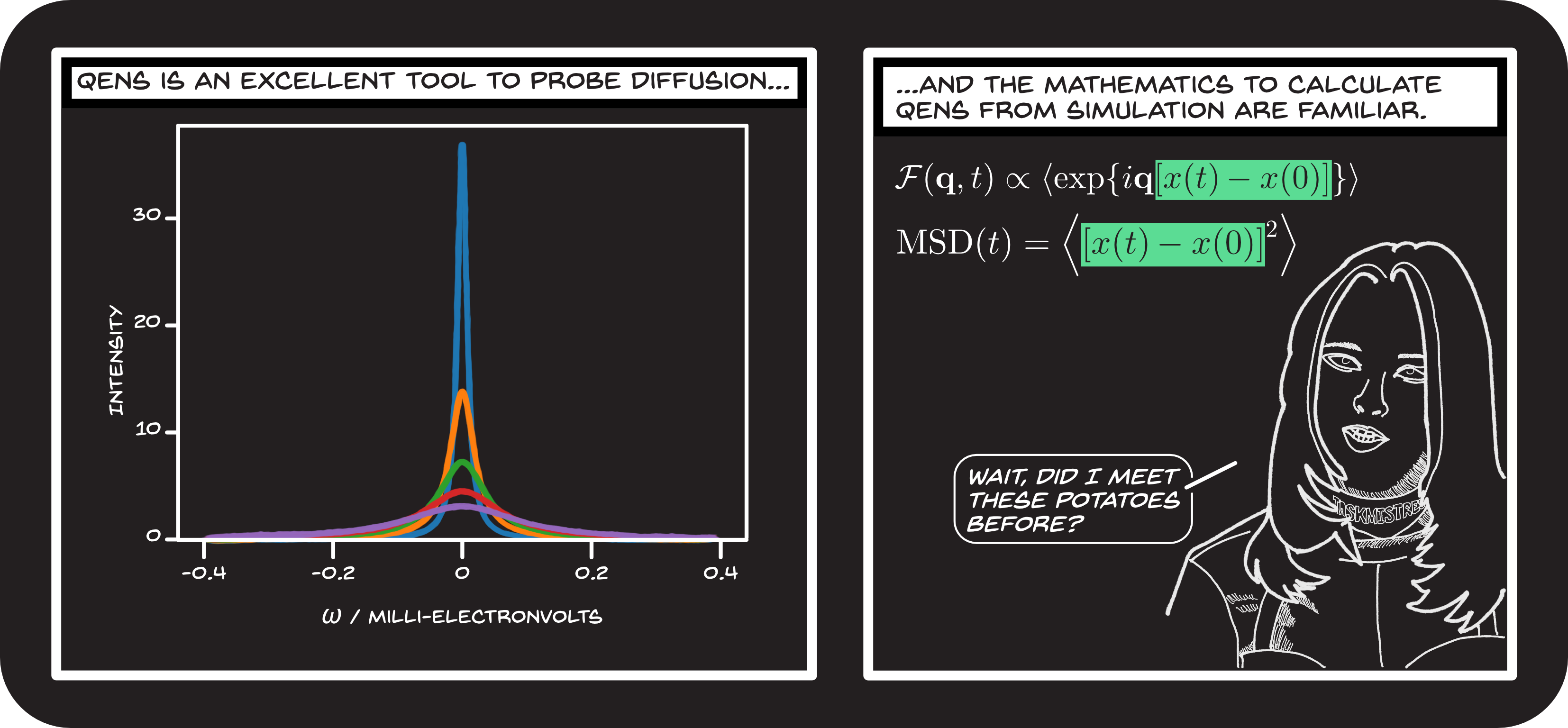Linking Simulation and Neutron Scattering
Neutron scattering is a valuable technique to probe the structure and dynamics of chemical systems. The complementarity of atomistic and coarse-grained simulations and neutron scattering is clear, covering the same lengthscales (and in the cause of quasi-elastic neutron spectroscopy, timescales). We are interested in how simulations can be used to improve the analysis of neutron scattering.
In the past, we have looked at how different levels of coarse-graining can be used in understanding of surfactant monolayer structure using neutron reflectometry.1 At this time, we prepared an open-educational resource to communicate how simulation and elastic neutron/X-ray scattering can be used together.2 Recently, we have developed an interest in quasi-elastic neutron scattering (QENS) as a tool to probe diffusion and how classical simulations can be used to improve the fidelity of these measurements.

Relevant Publications
-
A. R. McCluskey, J. Grant, A. J. Smith, J. L. Rawle, D. J. Barlow, M. J. Lawrence, S. C. Parker, & K. J. Edler. J. Phys. Comm., 3(7), 31233, 2019. DOI: 10.1088/2399-6528/ab12a9 ↩
-
A. R. McCluskey, J. Grant, A. R. Symington, T. Snow, J. Doutch, B. J. Morgan, S. C. Parker, K. J. Edler. J. Appl. Crystallogr., 52(3), 655, 2019. DOI: 10.1088/2399-6528/ab12a9 ↩